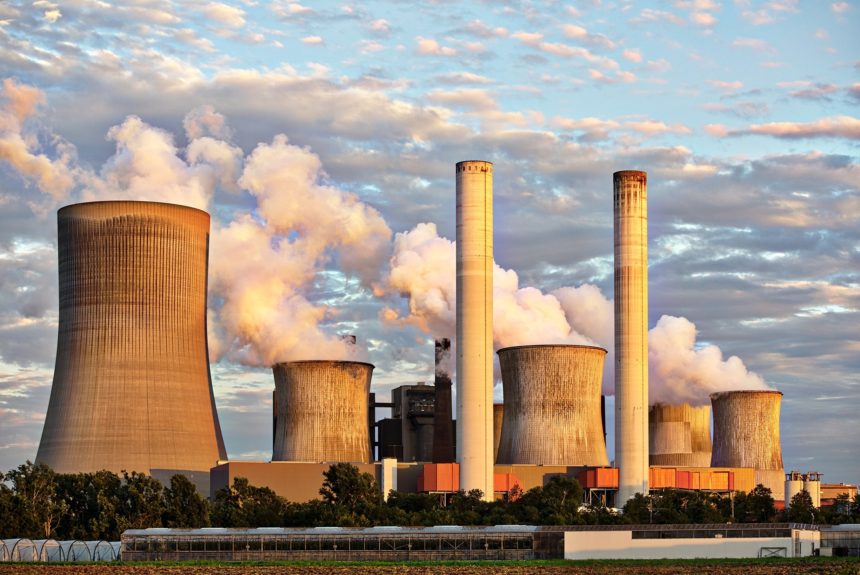Nuclear energy is the largest source of carbon-free electricity in the United States. Despite this, some environmental groups seek to stop any and all nuclear energy development by pushing misleading and alarming rhetoric, along with increasing government overregulation. As a result, by 2050, nuclear’s share of energy generation in the U.S. could decline from 20% to 11%. In the meantime, Russia and China continue to grow their nuclear fleets and leverage their strength for geopolitical purposes not aligned with democracy and freedom. If the United States is serious about playing a leadership role internationally to address climate change, we must embrace nuclear energy innovation as a hallmark of our energy strategy and further seek to collaborate with other countries to ensure our energy security long into the future.
Facts vs. Myths
- FACT: Nuclear energy is our largest source of emissions-free energy.
- MYTH: Nuclear energy is dangerous and unstable.
- FACT: Nuclear energy protects our environment and energy security.
The Benefits of Nuclear Energy
- Nuclear energy is clean energy.
- Nuclear energy provides 55% of America’s carbon free electricity – more than any other source of energy.
- Nuclear power generation produces zero carbon emissions.
- During its lifecycle, a nuclear power plant’s carbon emissions per unit of electricity is equivalent to offshore wind, and lower than solar.
- By producing carbon-free energy, the United States’ nuclear industry prevented more than 476 metric tons of CO2 from entering the atmosphere in 2019. That’s the equivalent to removing 100 million cars from the roads.
- Nuclear energy is safe.
- Studies have found that nuclear energy is our safest source of energy.
- Even in rare accidents such as Fukushima or Chernobyl, the United Nations found little to no evidence of radiation-related deaths.
- Nuclear waste is stored in canisters that are safe and durable. All of America’s nuclear waste from the last 60 years could be stored in a single Walmart.
- New-generation nuclear plants have even more advanced passive safety features that could prevent significant accidents from occurring.
- Nuclear energy is reliable.
- Nuclear energy is an ideal source of constant, baseload, reliable electricity, with a capacity factor (the amount of time a power plant produces energy) of 93%. Solar and wind energy technologies only have a capacity factor of 24% and 34%, respectively.
- Nuclear energy’s high capacity factor means that it is essential for meeting net-zero carbon goals.
- Nuclear energy is crucial for national security and global competitiveness.
- China & Russia are growing their nuclear fleets and presence in global energy markets, posing an increased risk to the energy security of the U.S. and the rest of the world.
- The U.S. has a clear choice – collaborate with other countries to help them meet their nuclear clean energy needs or cede that role to China and Russia.
Markets vs. Mandates
- Licensing and regulation costs have driven up the cost to build nuclear energy plants.
- Regulations from the 1970s increased nuclear energy construction costs by 200%.
- These regulations increased the quantity of concrete per megawatt by 27%, electrical cable by 36%, steel by 41%, and piping by 50%.
- It takes an average of 80 months to approve a project in the U.S. vs. 54 in the U.K.
- U.S. nuclear plants have an average of $60 million in regulatory costs per year.
- Companies such as NuScale, Oklo, TerraPower, and X-Energy are finding ways to reduce the cost of building nuclear power plants through small modular reactors (SMRs).
- SMRs are more efficient, safer, and have greater flexibility than older reactors.
- Germany, which has been phasing out nuclear energy since 2011, has seen its emissions and price of electricity rise. In contrast, Sweden and France have some of the lowest carbon footprints and cheapest energy prices in Europe – thanks to nuclear power.
How to Improve Nuclear to Benefit the Environment
- Modernize the nuclear licensing process of the Nuclear Regulatory Commission (NRC) by allowing performance-based safety designs rather than NRC top-down, prescriptive designs.
- Separate nuclear fission, fusion and SMRs in the regulatory process, recognizing that each one has its own unique safety designs and requirements.
- Continue public-private innovation partnerships like the Nuclear Energy Innovation Program, using expertise from the Department of Energy (DOE) and the National Laboratories.
- Increase nuclear energy exports.
- The U.S. International Development Finance Organization recently ended its ban on financing overseas nuclear energy projects, boosting deployment of nuclear technology globally.
In Summary
- Nuclear energy is essential to our efforts to reduce CO2 emissions.
- Nuclear energy is clean, safe, reliable, and important for our national security.
- The current licensing process and regulations inhibit the development of advanced nuclear and current nuclear technologies.
- Innovation and progress has been made to make nuclear energy more safe and reliable. Ultimately the United States must lower barriers and deploy more nuclear energy.


